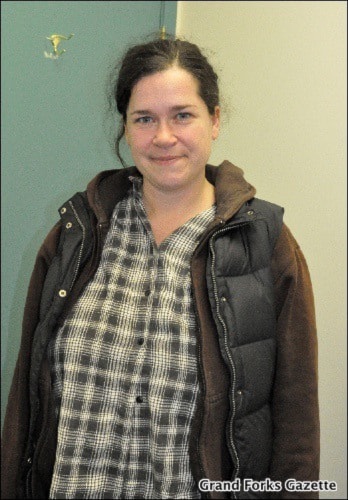The protection of the Lewis’ woodpecker in Grand Forks is part of a Ministry of Environment initiative aimed at protecting species and ecosystems at risk on private lands in British Columbia with the help of local governments.
Presented by Jenny Coleshill, the project co-ordinator for the Granby Wilderness Society, at a recent Grand Forks Environment Committee meeting, the Species and Ecosystems at Risk Local Government Working Group was originally established in 2009.
“The challenge is to protect species and ecosystems at risk (SEARS) on private land,” Coleshill explained. “Six per cent of B.C. is private land and there’s a higher portion of these species on private land, while 30 per cent of plants at risk are on private land and residential and commercial development is the most common threat.”
She noted that a University of British Columbia poll shows strong public support for species and ecosystems at risk.
“If you take B.C., 34 per cent of SEAR are very localized and only 10 per cent of SEAR can be found across B.C., such as tiger salamanders, which is only found in a tiny chunk of southern B.C. in the Okanagan,” she added.
The Ministry of Environment established this group to develop a collaborative vision in the province for species and ecosystems at risk on private land.
The outcome was a paper presented in January 2011 that includes five key strategies and 45 recommendations to enhance the protection of species and ecosystems at risk.
The group includes membership from regional and municipal governments from across the province.
Coleshill noted that the group is currently coming up with a five-year plan focused on the five key strategies, including: group meetings; work planning (organizing budget); and provincial prospective outlines how the province can support local government and stewardship.
The group will also create structure for province wide documents and establish a steering committee with local government representing it; and rotating around each year, including Ministry of Environment, the Ministry of Forests, Lands and National Resources Operations, and the UBCM (Union of British Columbia Municipalities).
“The next step is to initiate sub-working groups in four to five regions, pilot implementation of recommendations and priorities in gaps in the Okanagan in summer 2012, and regional focus on broadening discussion with local governments and local conservation groups,” she said. “We have to come up with a way to link north communities.”
Plans already implemented in Grand Forks for protecting species at risk include increasing the habitat for the Lewis’ woodpecker.
Board chair to the Grand Forks Environment Committee Cher Wyers said that municipal governments are looking for an exclusive ministry to be created to look after wildlife.
“We shouldn’t have to be putting money from local money to manage wildlife that are conflicting with our local area,” Wyers said.
“This year, Grand Forks put $35,000 into our deer committee. We can do all this planning and deer count, but the bottom line is, the provincial government has the last call on what we can do with those animals,” she added.
